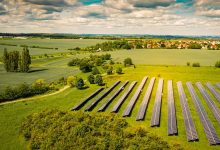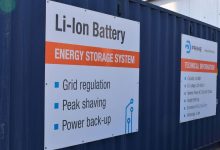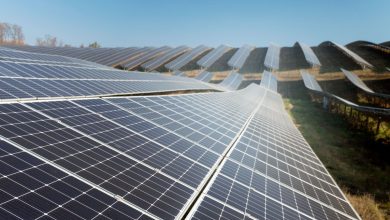The largest onshore wind farm in Europe
Dutch company NERO Renewables is preparing a giant investment in Romania, in a wind farm, in Dobrogea region. The wind farm with a capacity of 1GW (the largest onshore wind farm in Europe) will be built in the south of Constanta County, between the towns of Negru Voda and Baneasa, where 242 turbines will be installed, each with a height of 100 meters. Through this investment, Dobrogea reaches an almost unbeatable record, two of the largest onshore wind farms in Europe being located in this area.
NERO project equals over 20% of the existing Dutch onshore wind fleet and increases the Dutch electricity production by RES with 2.6%. Before 2021 NERO Renewables plans to install 362 wind turbines at 3 different sites in South-East Romania, with a total capacity of approximately 1.000 megawatt, generating up to 3-terawatt hour per annum. The project is directly connected to the high voltage grid and, as a result of the Integrated Single Market for Electricity (starting mid 2018), the generated power can be bought by any company in any European country.
NERO Renewables offers the Netherlands an opportunity to benefit from 1 gigawatt of wind power produced in Romania, thereby supporting the country to achieve its national renewable energy target for 2020. By adopting the 1 GW NERO project, the Netherlands could reduce its gap by approximately 30%. The ‘Joint-Project’ mechanism, developed by the European Commission, and part of the ‘Renewable Energy Directives’ is available and applies to the NERO Project.
NERO, which stands for ‘Netherlands – Romania’, is in the process of realizing 3 fully permitted wind farms in Romania. They will be directly connected to the national high voltage grid and will annually inject 3 terawatt hours (TWh) of renewable energy into the European grid, extractable in any of the EU member states.
On October 19th, 2017 the Dutch government published a review stating that the Netherlands will miss its 2020 target for renewable energy production and greenhouse gas emissions. Based on current projections, green schemes will produce 12.4% of the Dutch energy supply by 2020, significantly below the 14% target agreed with the European Union. By adopting the 1 GW NERO project, the Netherlands can still realize its wind power ambitions and reduce the renewable energy gap by approximately 30%. The legislation to support such an implementation is in place and is part of the ‘Renewable Energy Directives’ (RED 2009/28/EC).
In 2009, when the EU member states agreed on the ‘Renewable Energy Directives’, it was already clear that some member states would face difficulties reaching their quotas. To help member states reaching their 2020 targets, 3 possible cooperation mechanisms were introduced, to enable them entering into mutual agreements to cover their individual targets: ‘Statistical Transfer’, ‘Joint-Project’, ‘Joint-Support Scheme’.
Luxembourg was recently the first country to make use of the directive’s statistical transfer mechanism, agreeing to buy a minimum of 700,000 MWh of clean power from Lithuania for an estimated cost of 10 million euros (US$11.7 million). The Grand Duchy is obliged to source 11% of its power from renewables by 2020, compared with only 5% in 2015. Lithuania, meanwhile, surpassed its quota of 23% two years ago, with green energy now accounting for 25.75% of the country’s energy mix.
Luxembourg is hoping to broker a similar agreement with Estonia, which relies on renewables for 28.6% of its power, higher than its 2020 target of 25%.
NERO ‘s proposal to the Dutch government is based on the ‘Joint Project’ mechanism, which means that the
Netherlands and Romania enter into a one-off agreement, and that the 3 TWh of renewable energy will count for
the Dutch national renewable energy target during the entire lifetime (25 years or more) of the project. The Joint
Project mechanism can be implemented within the existing Dutch renewable support scheme called SDE+, avoiding complex and time consuming political procedures.
Besides supporting the Netherlands to reach its 2020 target, there are significant social benefits to adopt a project which will contribute to the welfare of the local Romanian people living in the sparsely populated areas where the wind farms will be built.
By co-funding NERO’s project in Romania, the Netherlands would be taking advantage of the directive’s joint project mechanism. Initially, power produced at the planned farms will all be sold domestically, although after Romania joins the EU’s integrated single electricity market (ISEM) in July 2018, the electricity can be traded freely among other member states.







